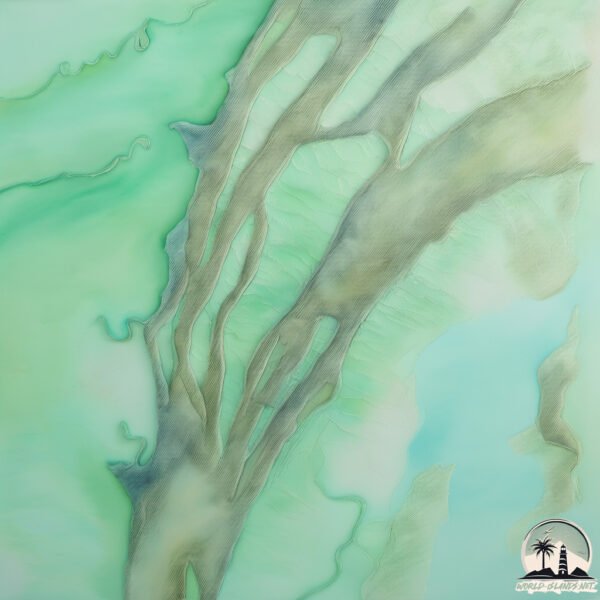Welcome to Hog Island , a Tropical island in the North Atlantic Ocean, part of the majestic Atlantic Ocean. This guide offers a comprehensive overview of what makes Hog Island unique – from its geography and climate to its population, infrastructure, and beyond. Dive into the details:
Geography and size of Hog Island
Size: 57.2 km²Coastline: 51.9 kmOcean: Atlantic OceanSea: North Atlantic OceanContinent: South America
Hog Island is a Medium Island spanning 57 km² with a coastline of 52 km.
Archipel: –
Tectonic Plate: Antarctica – Covers the Antarctic continent and extends outward, characterized by interactions with surrounding oceanic plates and known for its seismic activity along the periphery.
The geographic heart of the island is pinpointed at these coordinates:
Climate and weather of Hog Island
Climate Zone: TropicalClimate Details: Tropical Rainforest ClimateTemperature: Hot
Climate Characteristics: This climate is typified by heavy rainfall throughout the year, high humidity, and consistently high temperatures, leading to lush rainforests and rich biodiversity. Seasonal temperature variations are minimal.
Topography and nature of Hog Island
Timezone: UTC-04:00Timezone places: America/La_PazMax. Elevation: 20 m Mean Elevation: 8 mVegetation: Evergreen Broadleaf ForestTree Coverage: 48%
The mean elevation is 8 m. The highest elevation on the island reaches approximately 20 meters above sea level. The island is characterized by Plains: Flat, low-lying lands characterized by a maximum elevation of up to 200 meters. On islands, plains are typically coastal lowlands or central flat areas.
Dominating Vegetation: Evergreen Broadleaf Forest
Vegetation: 9 vegetation zones – Very Highly Diverse Island
Infrastructure and Travelling to Hog Island
Does the island have a public airport? no .
Does the island have a major port? no .
The mean population of Hog Island is 29 per km². Hog Island is Gently Populated. The island belongs to Guyana .
Continuing your journey, Great Troolie Island is the next notable island, situated merely km away.
Hog Island Boa from White Plains Reptile Expo | New Pickup Reveal!
Another epic addition to the collection, this time, it's a Hog Island Boa I picked up at the White Plains Reptile Expo! These locality ...
Hog Island Boa from White Plains Reptile Expo | New Pickup Reveal!
Another epic addition to the collection, this time, it's a Hog Island ...
Another epic addition to the collection, this time, it's a Hog Island Boa I picked up at the White Plains Reptile Expo! These locality ...
Shucking 2,000 Oysters A Day At Hog Island
In Shuck This, Anthony Rizzi—an oyster shucker from San Francisco's ...
In Shuck This, Anthony Rizzi—an oyster shucker from San Francisco's Hog Island Oyster Co.—heads straight to the source, Hog ...
Ultimate Boa Faceoff: HOG ISLAND vs PEARL ISLAND (Battle of the ISLAND BOAS)!
In this Ultimate Boa Faceoff, Brian compares two island locality boa ...
In this Ultimate Boa Faceoff, Brian compares two island locality boa constrictors, the Hog Island and Pearl Island boa, in 5 different ...
Guyana is classified as Developing region: Regions characterized by lower income levels, with economies in the process of industrialization and modernization. The level of income is Lower middle income.
News – Latest Updates and Headlines from Hog Island
Stay informed with the most recent news and important headlines from Hog Island. Here’s a roundup of the latest developments.
Loading...
Please note: The data used here has been primarily extracted from satellite readings. Deviations from exact values may occur, particularly regarding the height of elevations and population density. Land area and coastline measurements refer to average values at mean high tide.

